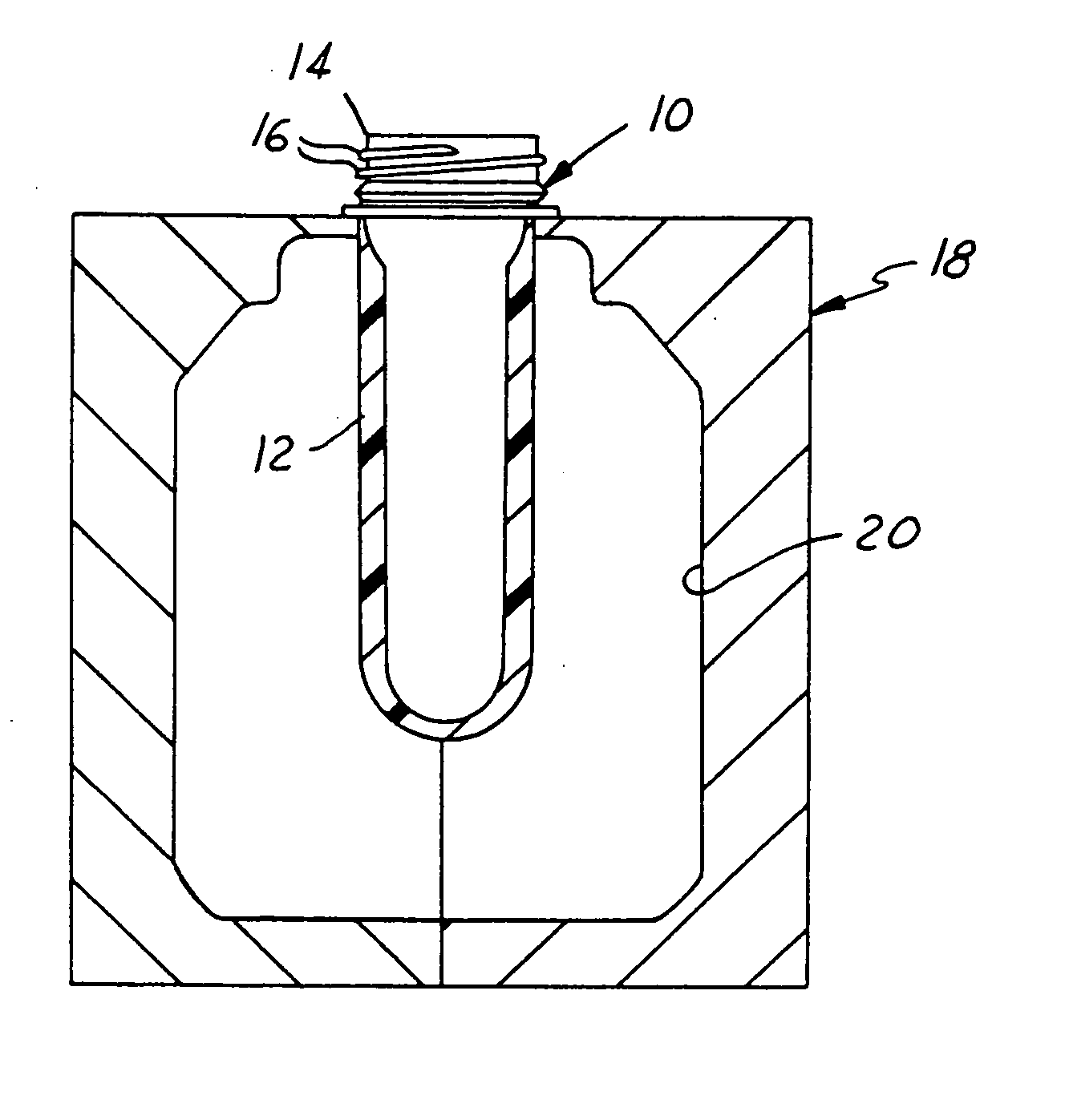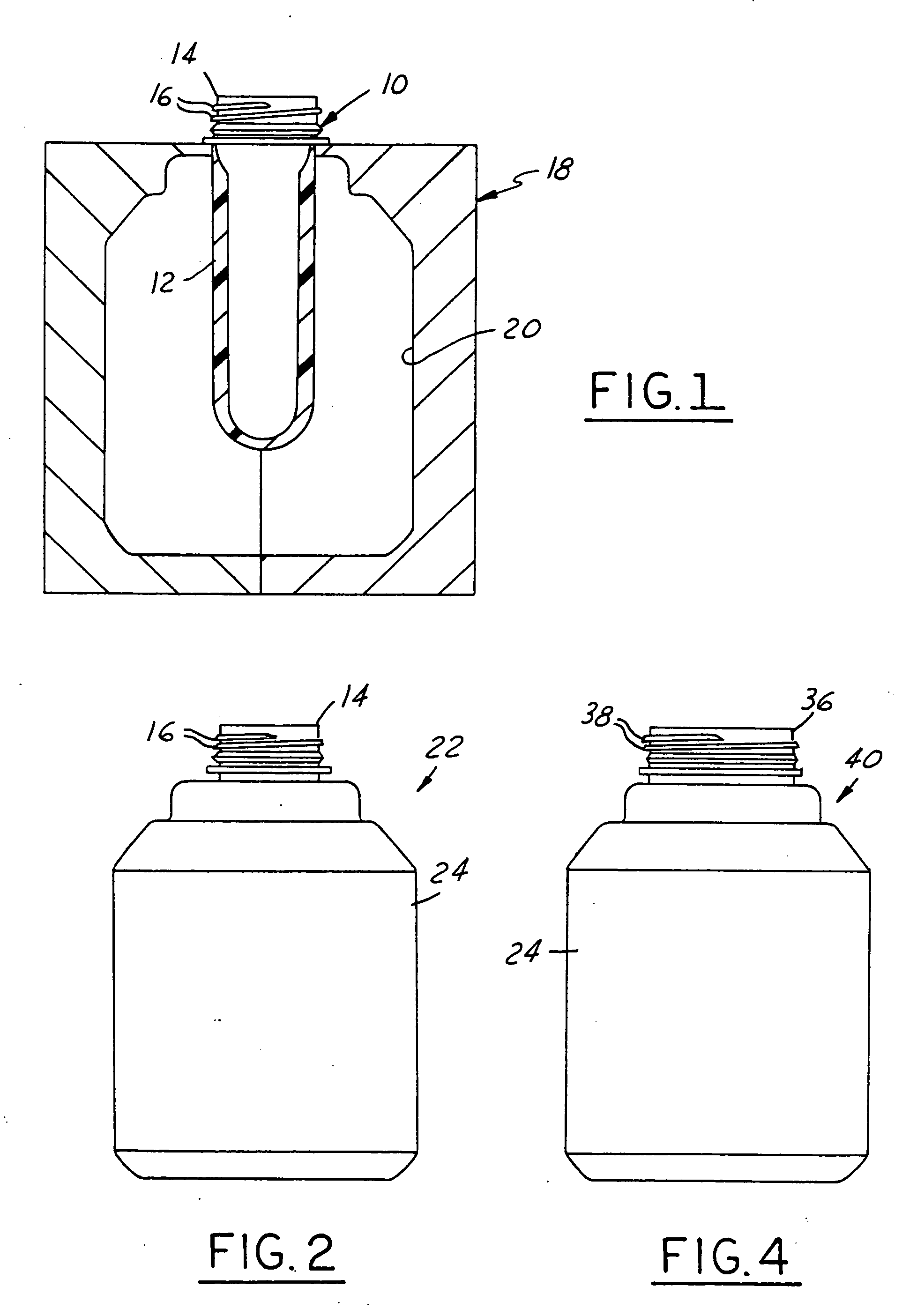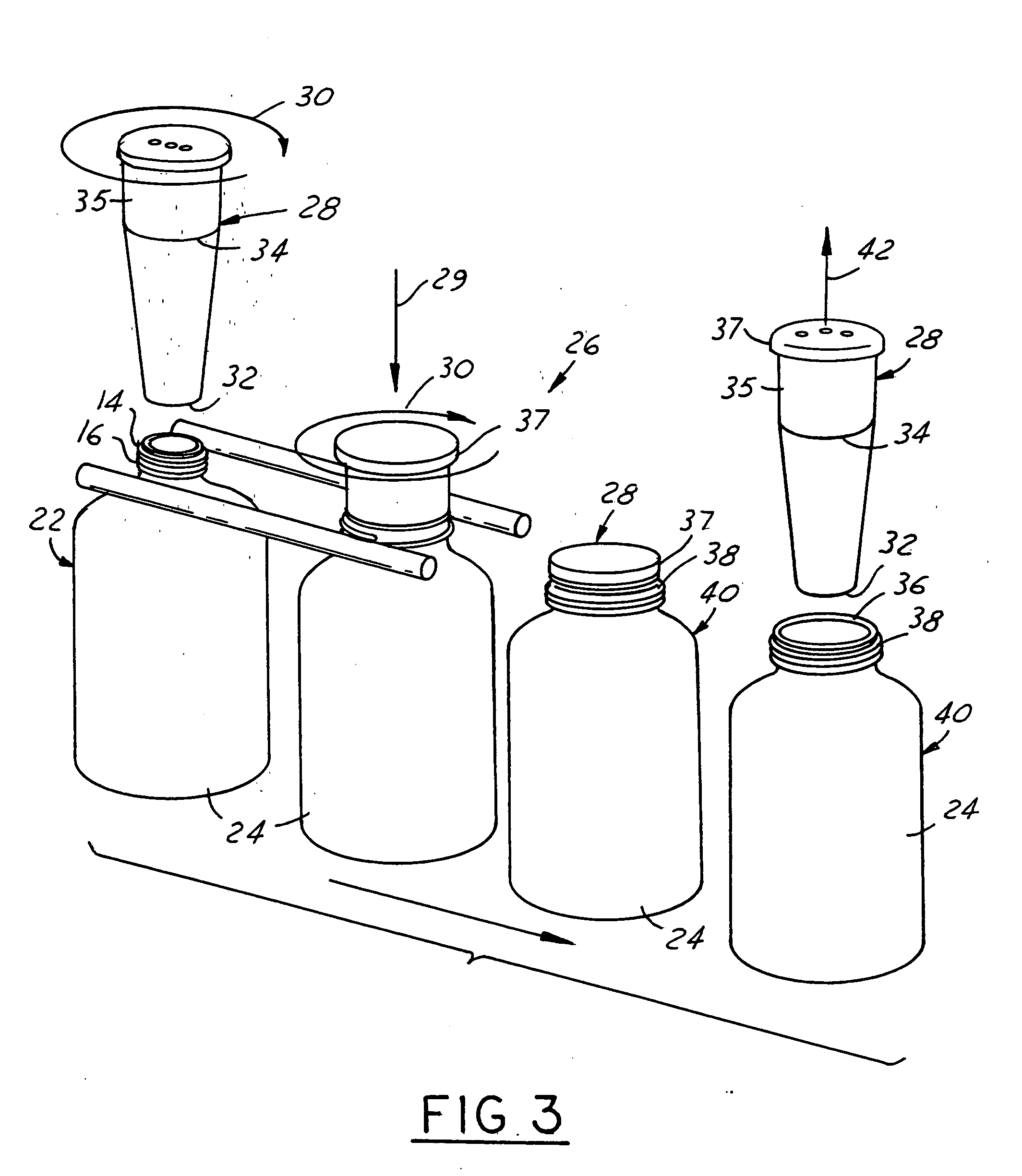Stretched container threads and method of manufacture
a technology of thread threads and containers, applied in the field of molded plastic containers, can solve the problems of substantial water vapor absorption, loss of barrier properties, and reduced process efficiency, and achieve the effects of increasing the finish diameter, reducing process efficiency, and increasing the process
- Summary
- Abstract
- Description
- Claims
- Application Information
AI Technical Summary
Benefits of technology
Problems solved by technology
Method used
Image
Examples
Embodiment Construction
[0012] The terms “narrow-neck” finish and “wide-mouth” finish are employed in their conventional senses in the present application, in that a “wide-mouth” finish has an outside diameter (E diameter) greater than about 2.0 inches or 50 mm, while a narrow-neck finish has an outside diameter equal to or less than about 2.0 inches or 50 mm. 28 mm and 43 mm finishes are typical narrow-neck finishes in the plastic container industry, although the present invention is by no means limited to these particular finish diameters. A 63 mm finish is a conventional relatively small wide-mouth finish in the plastic container industry, although the present invention again is not limited to wide-mouth finishes of this particular size. An 83 mm finish is a larger conventional wide-mouth finish size.
[0013]FIG. 1 illustrates a preform 10 as comprising a body 12 and an integrally molded finish 14. Finish 14 has one or more external threads 16 integrally molded on the finish. Preform 10 can be fabricated...
PUM
| Property | Measurement | Unit |
|---|---|---|
| diameter | aaaaa | aaaaa |
| diameter | aaaaa | aaaaa |
| diameter | aaaaa | aaaaa |
Abstract
Description
Claims
Application Information
 Login to View More
Login to View More - R&D
- Intellectual Property
- Life Sciences
- Materials
- Tech Scout
- Unparalleled Data Quality
- Higher Quality Content
- 60% Fewer Hallucinations
Browse by: Latest US Patents, China's latest patents, Technical Efficacy Thesaurus, Application Domain, Technology Topic, Popular Technical Reports.
© 2025 PatSnap. All rights reserved.Legal|Privacy policy|Modern Slavery Act Transparency Statement|Sitemap|About US| Contact US: help@patsnap.com



